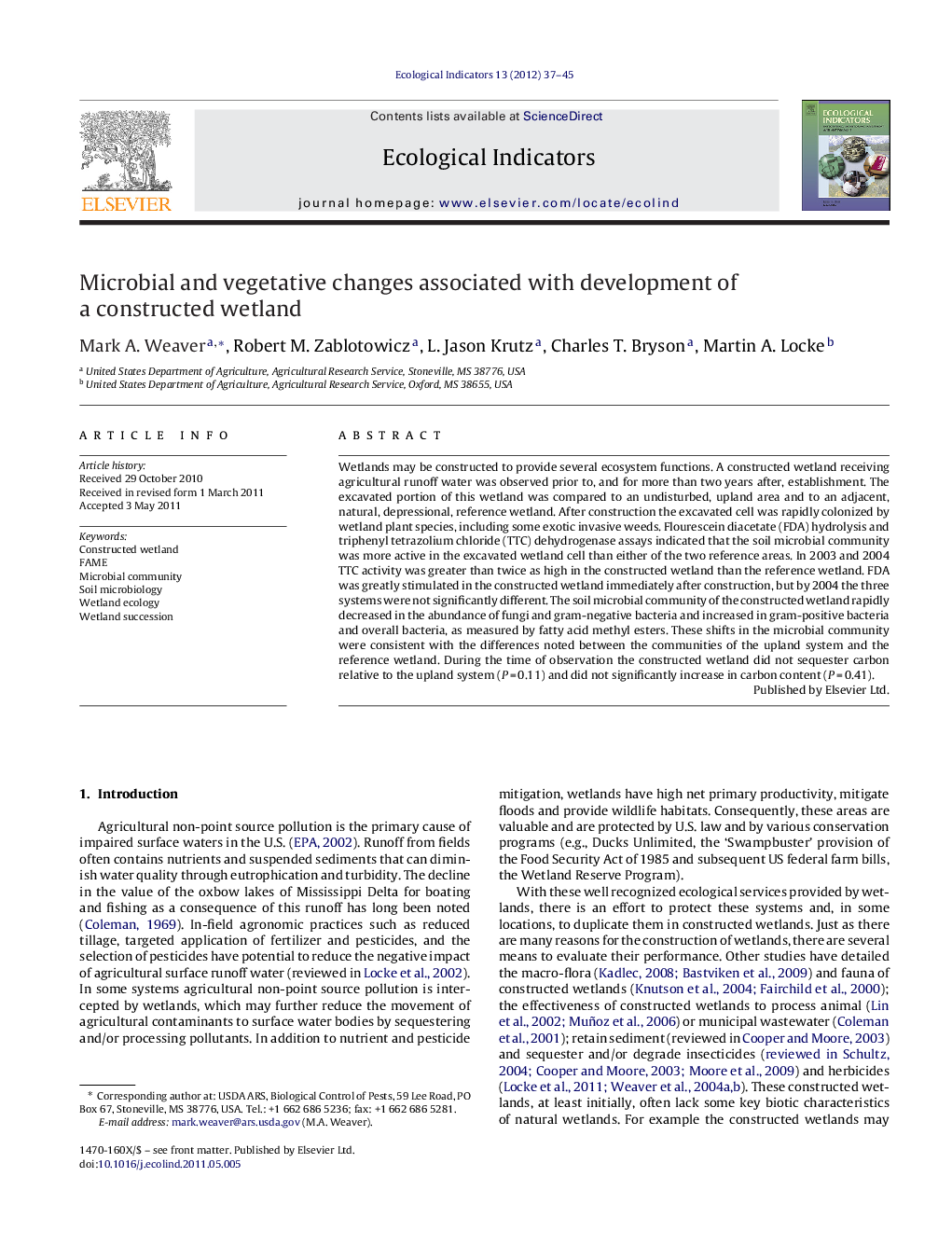| Article ID | Journal | Published Year | Pages | File Type |
|---|---|---|---|---|
| 4373997 | Ecological Indicators | 2012 | 9 Pages |
Abstract
Wetlands may be constructed to provide several ecosystem functions. A constructed wetland receiving agricultural runoff water was observed prior to, and for more than two years after, establishment. The excavated portion of this wetland was compared to an undisturbed, upland area and to an adjacent, natural, depressional, reference wetland. After construction the excavated cell was rapidly colonized by wetland plant species, including some exotic invasive weeds. Flourescein diacetate (FDA) hydrolysis and triphenyl tetrazolium chloride (TTC) dehydrogenase assays indicated that the soil microbial community was more active in the excavated wetland cell than either of the two reference areas. In 2003 and 2004 TTC activity was greater than twice as high in the constructed wetland than the reference wetland. FDA was greatly stimulated in the constructed wetland immediately after construction, but by 2004 the three systems were not significantly different. The soil microbial community of the constructed wetland rapidly decreased in the abundance of fungi and gram-negative bacteria and increased in gram-positive bacteria and overall bacteria, as measured by fatty acid methyl esters. These shifts in the microbial community were consistent with the differences noted between the communities of the upland system and the reference wetland. During the time of observation the constructed wetland did not sequester carbon relative to the upland system (PÂ =Â 0.11) and did not significantly increase in carbon content (PÂ =Â 0.41).
Keywords
Related Topics
Life Sciences
Agricultural and Biological Sciences
Ecology, Evolution, Behavior and Systematics
Authors
Mark A. Weaver, Robert M. Zablotowicz, L. Jason Krutz, Charles T. Bryson, Martin A. Locke,
